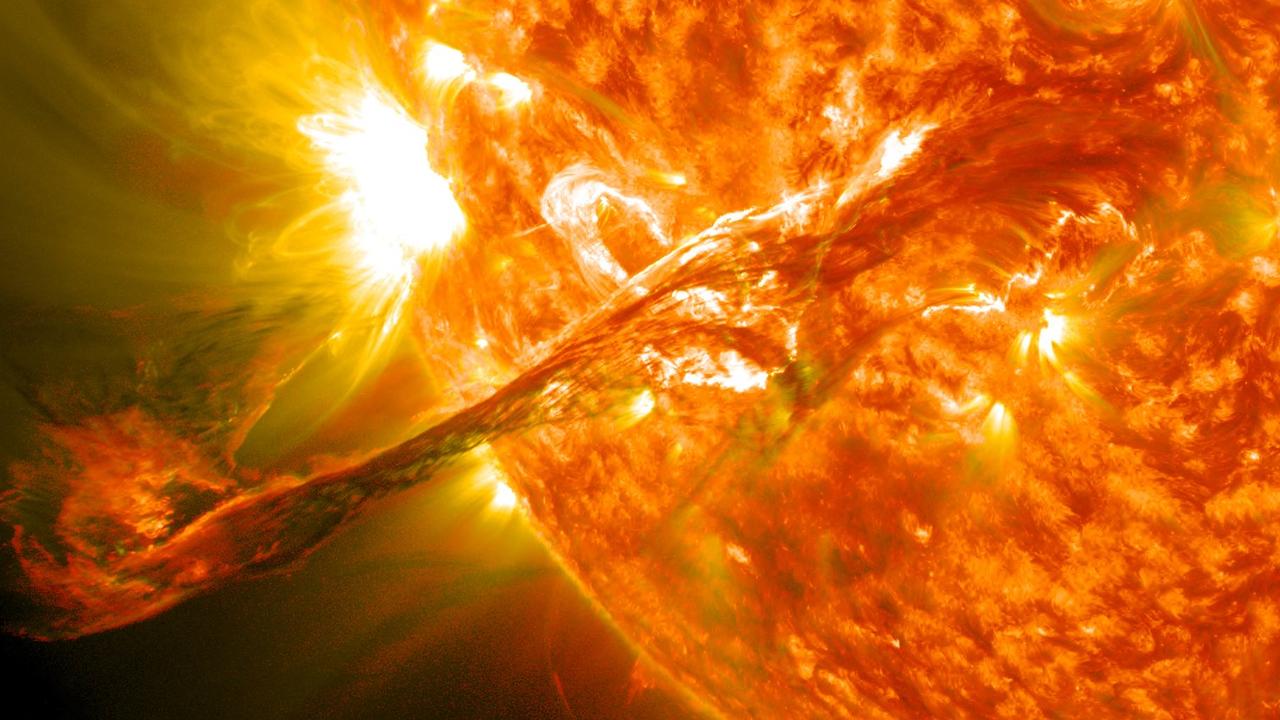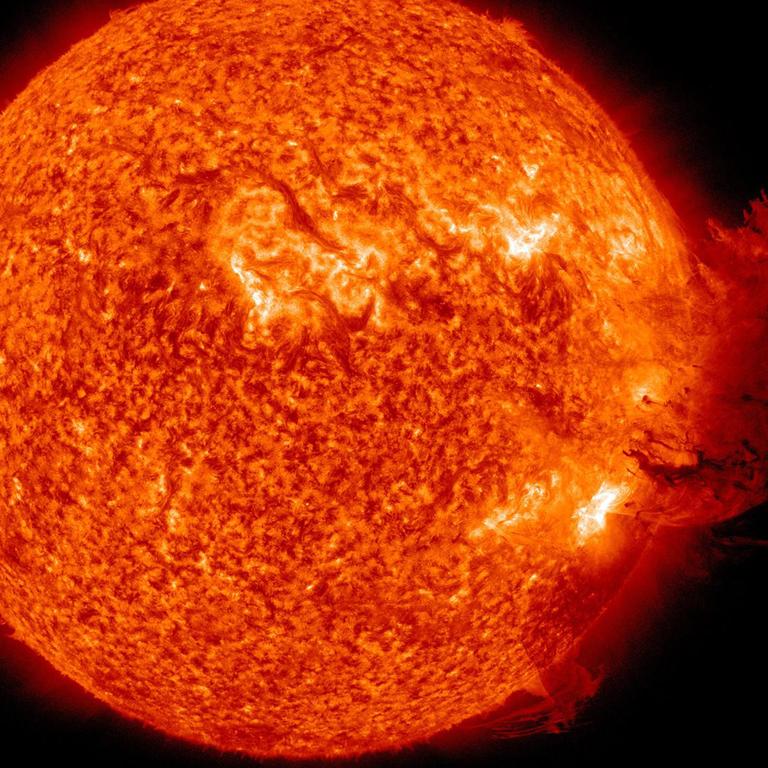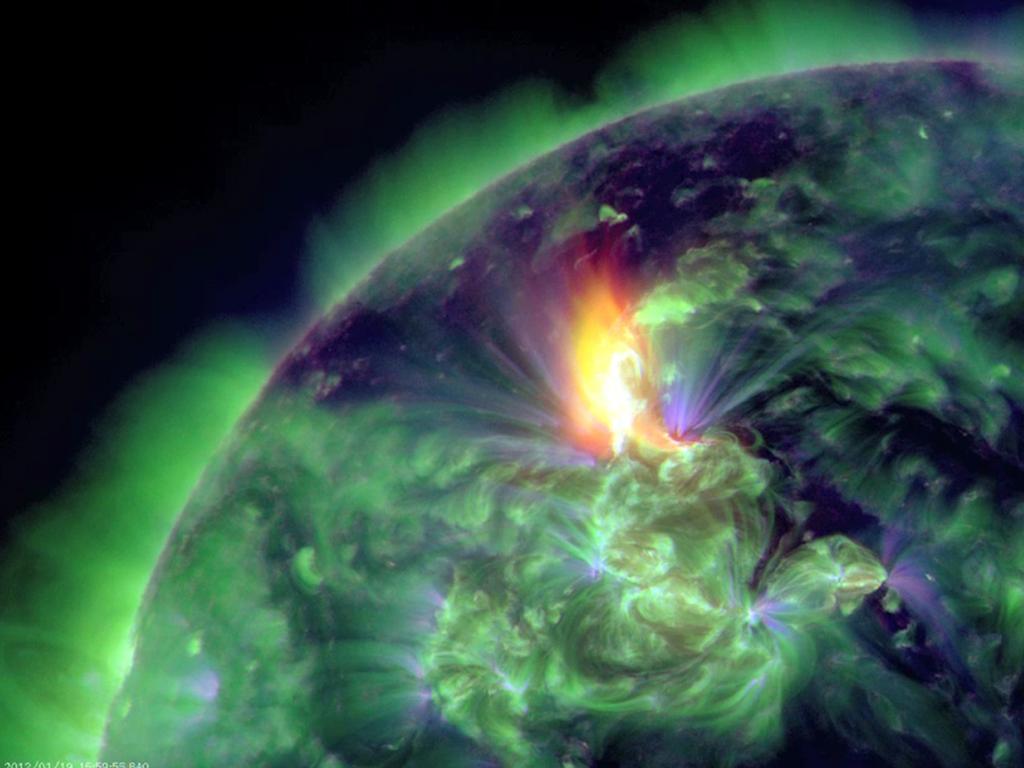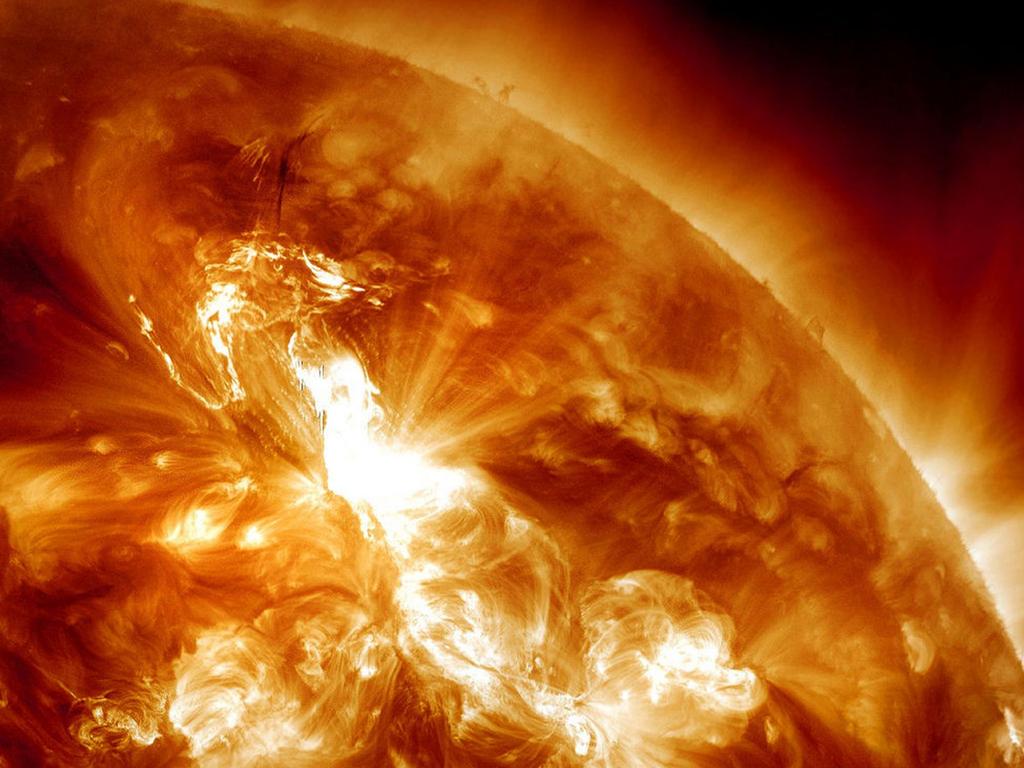Solar flare ejected from sun could hit Earth and light up the sky
The latest solar flare ejected from the sun could deliver a beautiful aurora light display … and possibly switch off the power

READING LEVEL: ORANGE
Space weather experts have spotted the sun ejecting a large mass of particles* and believe it could hit Earth in the next few days.
When ejections like this impact Earth’s magnetic field, they can cause solar storms.
While such an event is commonly known as a solar flare, the scientific term is “a coronal* mass ejection” or CME.
A CME is a huge expulsion* of plasma* from the sun’s outer layer, called the corona.
These expulsions shoot through space and can occasionally hit Earth.

Fortunately, the solar storm predicted for Wednesday 23 March is only likely to be a “G1 minor,” meaning no one will probably even notice if it happens.
“Another CME is heading for Earth, and it’s a little off target,” said Spaceweather.com experts.
“A glancing blow (or near miss) is possible during the late hours of March 23, according to (US National Oceanic and Atmospheric Administration) forecasters*. This will be the third time in the past week that a CME has almost landed a direct hit.”
The G1 minor category of solar storm could cause weak power grid interference and have a small impact on satellite communications.
A G1 storm could also confuse migrating* animals that rely on the Earth’s magnetic field for their sense of direction.

One good thing about solar storms is that they can produce very pretty natural light displays like the northern lights.
These natural light shows are called “auroras” and are examples of the Earth’s magnetosphere* getting bombarded* by solar wind, which creates the stunning green and blue arrays.
“Even a near miss can produce bright Arctic auroras,” said Spaceweather.com experts. “Best case scenario for ‘auroraphiles’*: a minor G1-class geomagnetic* storm.”
The Earth’s magnetic field helps to protect us from the more extreme consequences of solar flares.

In 1989, a strong solar eruption shot so many electrically charged particles at Earth that the eastern Canadian province of Quebec lost power for nine hours.
As well as causing issues for our technology on Earth, they are potentially dangerous for astronauts if contact resulted in injury or interfered with mission control communications.
The sun is currently at the start of a new 11-year solar cycle, which usually sees eruptions and flares grow more intense and extreme.
This story was originally published by The Sun and is reproduced here with permission.
GLOSSARY
- particles: tiny fragments of something, minuscule pieces
- coronal: related to the sun’s outer layer, the corona
- expulsion: act or process or something or someone being forcibly ejected or removed
- plasma: plasma is the fourth state of matter (solid, liquid, gas, plasma); solar wind is plasma
- forecasters: includes meteorologists who calculate in advance what weather events will occur
- migrating: moving from one region or habitat to another depending on the season
- magnetosphere: region of space surrounding Earth and other objects and planets in space
- bombarded: inundated, swamped by direct stream of high-speed particles
- auroraphiles: people who love or are fascinated by and follow aurora light displays
- geomagnetic: magnetic field and properties associated with Earth
EXTRA READING
Aurora Australia puts on a stunning southern show
NASA reveals high-resolution photos of the sun
NASA’s new ‘time travel’ telescope
QUICK QUIZ
- What does CME stand for?
- What two things could the G1 category of storm cause?
- Who or what might find a G1 minor storm confusing and why?
- What happened during a strong solar storm in 1989 and where?
- What is an aurora?
LISTEN TO THIS STORY
CLASSROOM ACTIVITIES
1. Solar storm light show
A G1 solar storm is a great opportunity to see a beautiful light show in the sky. Your teacher can show you some images online of the northern lights and the amazing colours they produce in the sky. These pictures are often over landmarks or amazing natural wonders.
Draw or sketch a local landmark or some natural habitat in the area you live with a solar light show (aurora) above. Your picture should be dark, but be able to show the landmark or nature with the colours in the sky.
Mount your picture on coloured card to display.
Time: allow 40 minutes to complete this activity
Curriculum Links: Visual Arts
2. Extension
Construct a diagram explaining how and why these solar storms occur and how it affects us here on Earth. Your diagram should be simple and easy to follow to explain a solar storm.
Time: allow 20 minutes to complete this activity
Curriculum Links: English; Science
VCOP ACTIVITY
Summarise the article
A summary is a brief statement of the main points of something. It does not usually include extra detail or elaborate on the main points.
Use the 5W & H model to help you find the key points of this article. Read the article carefully to locate who and what this article is about, and where, when, why and how this is happening. Once you have located this information in the article, use it to write a paragraph that summarises the article.
Time: allow 25 minutes to complete this activity
Curriculum Links: English; Science

